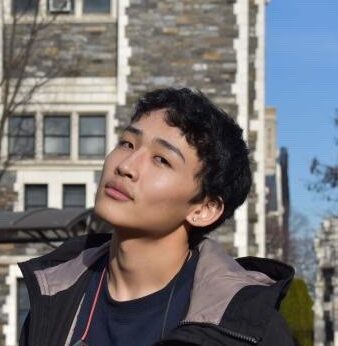Osva, Anu. “The Symbiotic Human Animal Relationship: An Artistic Investigation of Yakutian Cattle.” Good to Eat, Good to Live with: Nomads and Animals in Northern Eurasia and Africa , 11, no. North Eastern Asian Studies (2012): 203–2011.
In spring 2005, a research team traveled to the Sakha republic in the Russian Federation. The goal was intended to evaluate socio-economic risks associated with preservation of endangered Yakutian cattle. Along the way they reevaluate the perspective of this research study as an artistic meditation. Interviewing people, drawing, painting and photographing the animals. This up close confrontation with these animals allowed for an unique view and artistic interaction. Larger implications and understandings of human – animal symbiosis and relationships are assessed from these rare colonized peoples.
Kleszcz, Justyna. “The Idea of Zoopolis in Contemporary Architectural Dimension.” E3S Web of Conferences 49 (2018): 00056. https://doi.org/10.1051/e3sconf/20184900056.
In this article, they analyze the prospects of non-anthropocentric architecture and how it is and should become an emerging determiner of contemporary architecture. They analyse Donaldson and Kymlicka’s work from 2011 and re-interpret their political-scientific perspective to one of physical conceptions.
Travlou, Penny. “Kropotkin-19: A Mutual Aid Response to COVID-19 in Athens.” Design and Culture 13, no. 1 (2021): 65–78. https://doi.org/10.1080/17547075.2020.1864119.
While this case study of Mutual aid, appropriately named after Peter Kropotkin’s work of Mutual aid and it being an important driver for evolution, it is also a beautiful piece of participatory and socially engaged art. It is a particularly potent example and piece of art is because it applies to our modern times and would be especially engaging. It tracks the emergence of Kropokin-19, a mutual aid organization in Exarcheia, Greece during the lockdowns in March and May 2020.
Spriggs, Hermione. “‘Uurga Shig’ – What Is It like to Be a Lasso? Drawing Figure–Ground Reversals between Art and Anthropology.” Journal of Material Culture 21, no. 4 (2016): 405–28. https://doi.org/10.1177/1359183516662673.
This article looks at Mongolian indeginious understandings of cosmology and human-animal relationships in nomadic settlements. The writer reflects on these topics through the lens of ‘uurga’, Mongolian for lasso, the best way to describe is that it resembles the shape of a ‘P’, the bowl (in typography terms) of the letter P, being the rope while, the stem is a flexible piece of wood. Alfred Gell’s thesis is used as additional framing, his work ‘Traps as artworks and artworks as traps’ (1996), allows the Lasso to be representative of a push against western ideas of animals.
Regine, and K-9_topology. “K-9_topology, On the Human/ Dog Coevolution. An Interview with Maja Smrekar.” We Make Money Not Art, March 28, 2018. https://we-make-money-not-art.com/k-9_topology-on-the-human-dog-co-evolution-an-interview-with-maja-smrekar/.
The article interviews and examines the artworks of Maja Smrekar. She particularly investigated human/dog/wolf co-evolution and codependency. She even goes far enough to imply hybridization of human and dog species. Her most famous work, K-9 Topology, places her work of human – dog coevolution as a commentary on what it means to be human and challenges the self centeredness of humanity as well.
Editorial, Artsy, and Jon Mann. “When Joseph Beuys Locked Himself in a Room with a Live Coyote.” Artsy, November 3, 2017. https://www.artsy.net/article/artsy-editorial-joseph-beuys-locked-room-live-coyote.
This website editorial looks at the origins and cultural inspirations that led to Joseph Beuys revolutionary performance art piece.
Gorman, Richard. “What’s in It for the Animals? Symbiotically Considering ‘Therapeutic’ Human-Animal Relations within Spaces and Practices of Care Farming.” Medical Humanities 45, no. 3 (2019): 313–25. https://doi.org/10.1136/medhum-2018-011627.
Drawing on case studies and empirical studies from care farms in the UK. This article uses the term symbiosis as a framework to examine relationships within interspecies therapeutic practices. Care farming is a new idea in which it uses farming practices as a form of therapeutic intervention. It attempts to dissuade the notion that interspecies therapy is a strictly anthropomorphic or utilitarian tool. The text goes to explore whether or not these relationships are reciprocally beneficial and how it can be used to further ideas of mutualism and codependence from the perspective of medical humanities.


